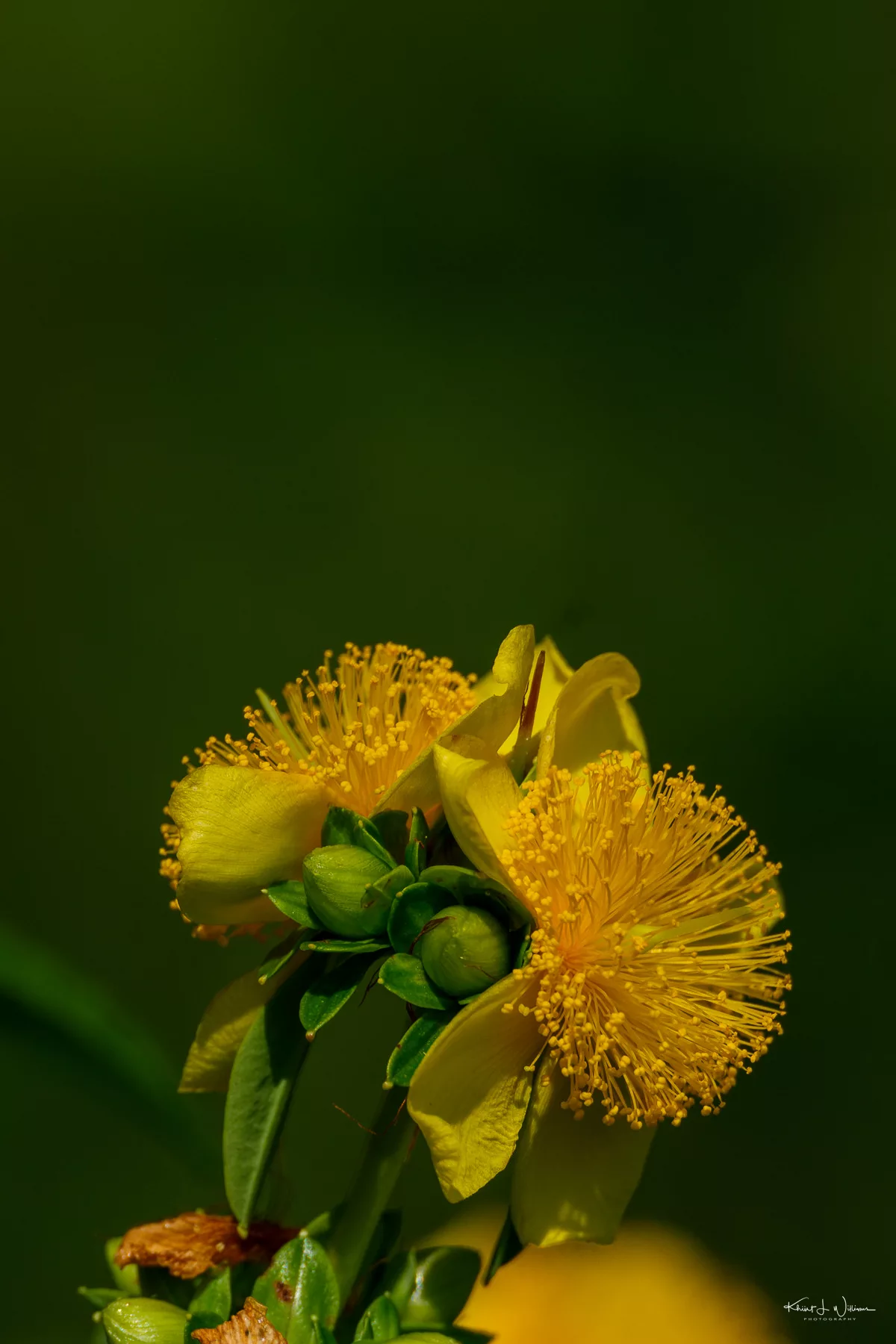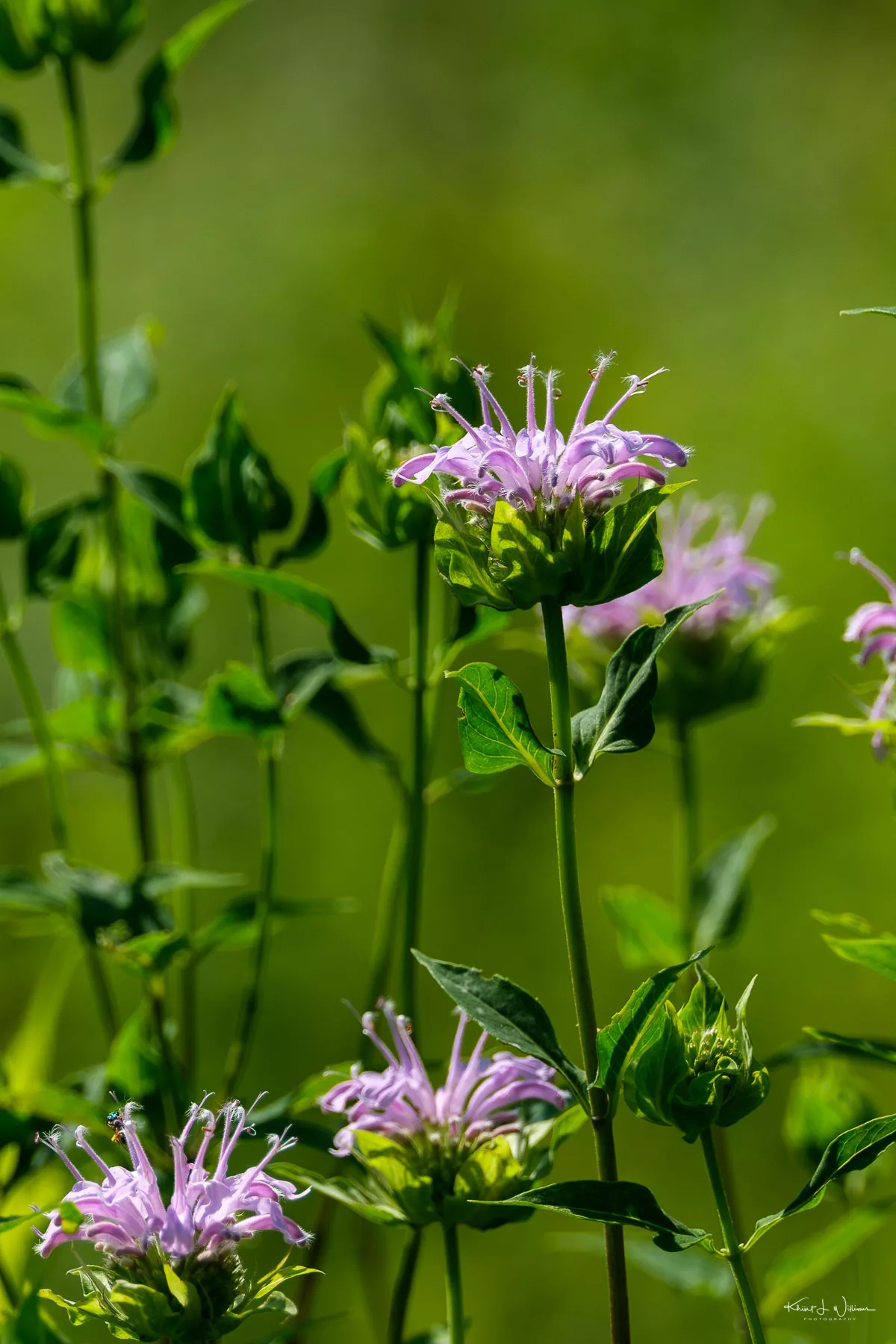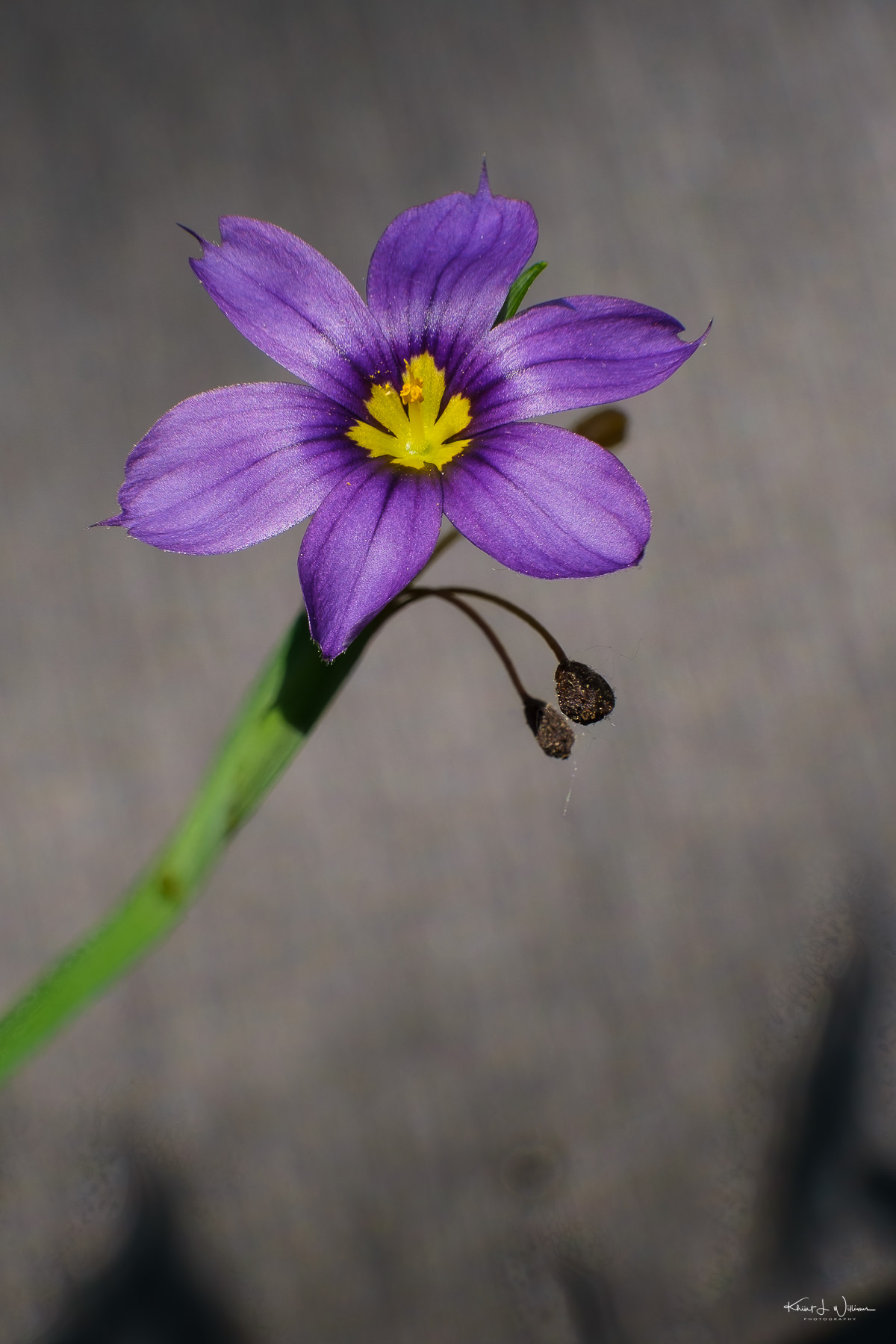I photographed the flowers of Shrubby St. John's Wort (Hypericum prolificum) during a tour of the large meadow at Bowman's Hill Wildflower Preserve in New Hope, Pennsylvania.
St. John's Wort is a perennial shrub indigenous to the central and eastern regions of the United States and Ontario. Its habitat is diverse - slopes, thickets, swamp edges, and oak woodlands. Our tour guide explained that St. John's Wort is a shrub that can reach heights up to 2 meters (6 feet 7 inches). Its leaves are elliptic to oblanceolate, and the flowerheads display a captivating array of 1 to 9 flowers. These flowers have five golden yellow petals and numerous stamens.
I learned that in its naturally mounded form, Shrubby St. John's Wort leaves can be easily pruned into a pleasing, rounded shape in early spring. This shrub comes alive throughout the summer with yellow flowers, attracting many pollinators. Its brown, 3-chambered seed capsules persist even in winter, providing food for winter birds and adding late-season visual interest.
Shrubby St. John's Wort's growth rate is slow but blooms from June through September. It loves full sun and can flourish in nearly any soil, including the heavy clay in my area near Rocky Hill. Remarkably drought-tolerant, it also has the advantage of being resistant to rabbits and deer. I need to find a way to plant this in my small garden.
Shrubby St. John's Wort plays a crucial role as a larval host plant for several species of butterflies and moths, including the Gray Hairstreak butterfly and the Wavy-lined Emerald moth.



